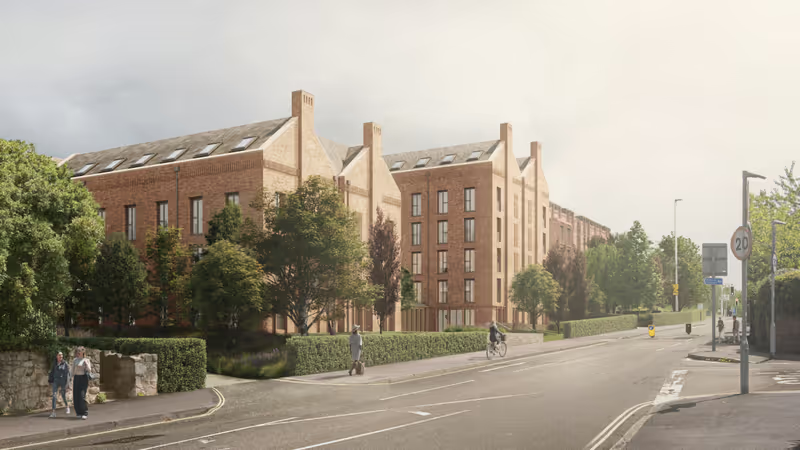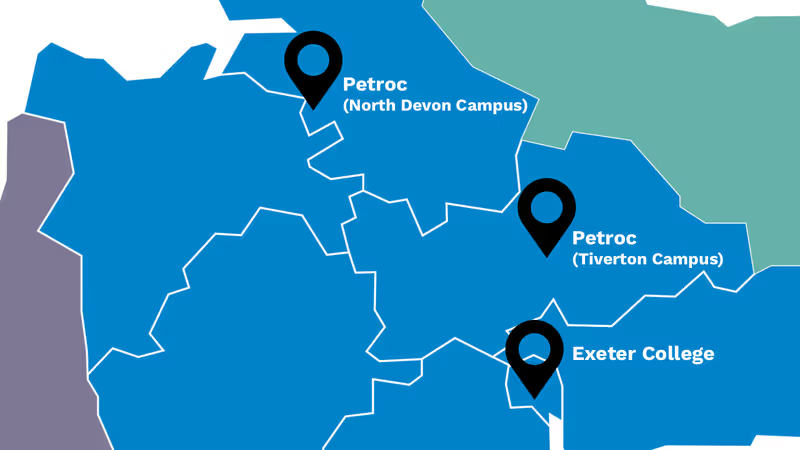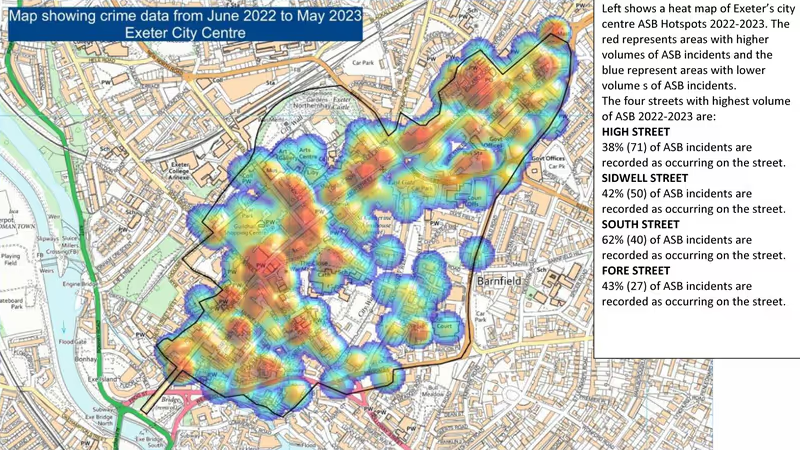Research commissioned by Exeter City Council to underpin its post-pandemic approach to employment and skills has found a city beset by unaffordable housing, low graduate retention and economically inactive over 50’s.
The research report, which largely relies on authoritative primary information sources for its findings, presents a much more realistic picture of Exeter’s economic viability than typical city council reports, which often selectively present outdated information or material from secondary or even tertiary sources.
It has been used as a basis for a new Exeter employment and skills strategy.
A summary provided for councillors by council officers mentions none of the key challenges identified in the research, so only those councillors who digest all 77 pages of the research report and strategy together would discover all the many inconvenient truths about Exeter’s economy that they contain.
When the council’s executive committee met in May to discuss the strategy none of its members had anything to say about these challenges, although several extolled the quality of the research.
Ruth Williams said: “I think it’s a brilliant report, the evidence base is just stunning. I’ve never seen anything so embedded in real, comprehensive, wide-ranging evidence.” Laura Wright also said it was “stunning” while Duncan Wood called the research “crucial”.
The council’s chief executive Karime Hassan even claimed that the report highlighted how Exeter delivers “inclusive growth”.
A meeting of the full council is due to examine the skills strategy next month. Which key challenges did the executive committee overlook?
 Exeter skills strategy and evidence base, May 2022. Source: Exeter City Council.
Exeter skills strategy and evidence base, May 2022. Source: Exeter City Council.
Housing affordability
The research found that Exeter house prices have increased by nearly 60% during the past ten years. Median house prices are now nearly ten times median earnings in the city, which have been 10% lower than the England average for the past decade.
While house price growth has affected many parts of the country, since the pandemic it has been “significantly higher in Exeter than other geographies” at nearly 18%, compared with less than 7% in Devon and 7.5% across England.
Exeter rents are also “much higher than both Devon and England” while rental property availability has “sharply decreased” since the pandemic, by 41%, with attendant implications for the city’s ability to “attract and retain talent”, particularly younger people.
Increasingly unaffordable housing combined with poor public transport is “forcing many individuals working in the city but living outside to commute via car” which “prevents those on lower earnings from either remaining in, or locating to, the area”.
Meanwhile low living standards and limited wellbeing are both identified as problems for those on lower wages “who do remain”.
Exeter’s “deprivation performance” was found to be “poorer than the Devon average for health and disability, crime, education, skills and training” and the city is at risk of becoming a “two tier economy” in which “residents either work remotely in high skilled, high value roles, or work locally in lower skilled service sectors supporting these individuals”.
Economic activity levels
The research also found that the rate of economic activity in Exeter has “experienced a large fall since the COVID-19 pandemic” with the proportion of economically active over 50’s falling by more than 13%, twice as much as across Devon.
There are also “far fewer economically active people in the 20 to 24 age group in Exeter compared to Devon and England”.
This is reflected in high vacancy rates “across many sectors and occupations” which have increased since the pandemic. Vacancy rates in some sectors, such as transportation, have more than doubled.
There are now more than 6,000 vacancies in health care in the Exeter area. Health and social work, which constitutes nearly a fifth of Exeter’s employment market, has “consistently had the highest number of vacancies” for the past ten years.
By 2030 Exeter is expected to need at least 3,500 more workers in this sector, which may be an underestimate “given the acute ageing population in Devon where Exeter provides a major health and care centre for the surrounding local authorities who all have rapidly ageing populations”.
School and college leavers and graduates, who are targeted for these jobs, may be deterred by “the challenges of housing affordability, transport and attractiveness of Exeter as a destination”.
Meanwhile the local construction sector, which is partly being propped up by the “inward migration of older demographics purchasing homes and the rate of second home ownership” in the area, is experiencing “shortages in many roles and skill areas”.
Replacement demand alone, exacerbated by an ageing workforce, is expected to mean 30,000 new construction workers will be needed in the region by 2025.
The key recruitment barrier in multiple sectors, from arts and culture to professional services, is identified as “sufficient pay for the high cost of living”.
Graduate retention
Insufficient pay is not the only reason for Exeter’s low graduate retention rate. Poor job prospects also play a significant role, with 42% of workers in Devon underemployed in jobs for which they are overqualified.
Both the University of Exeter and Exeter College also have “higher than UK average rates for unemployment and other outcomes including travel and caring”.
In addition, Exeter has “significantly lower rates of young people going into education than the UK average” in the first place, with less than a third of 16-18 year olds in Exeter going into sustained education compared with nearly half across the UK.
Only 9% of University of Exeter undergraduates come from Devon, and only a quarter from the wider South West region.
Fifteen months after graduating less than 7% of the university’s graduates that came from elsewhere remain in Devon.
A large majority leave for London and the South East where they are still to be found five years later, by which time there has been no net graduate retention at all across the South West region.
Despite the extraordinary increase in Exeter university student numbers, at nearly three and a half times the rate across the UK higher education sector in recent years, graduate retention rates remain low.
So while Exeter appears to be a relatively young city, the “very high inflows of 15 to 19 year-olds” is “mirrored by comparative outflows for ages 20-24”.
The presence of such a large and expanding student body does, however, have a significant impact on the affordability and availability of housing in the city.
There are currently nearly 16,000 students living in more than 4,500 Houses in Multiple Occupation (HMOs) which could otherwise be used for residential housing by local people. Around 500 more dwellings are expected to be lost to this use during the next academic year.
Renting to students is much more profitable for landlords than renting to residents, not only because high turnover rates facilitate regular rent increases but also because students pay much higher rents.
Like inwardly-migrant older people buying houses with wealth accumulated in other parts of the country, the ability of many students to pay much higher housing costs than local people is disconnected from Exeter’s economy.
If the council wants to make living and working in Exeter more viable for young people and graduates, as well as economically-active incomers with skills the city needs, and address its labour supply shortages, it cannot avoid confronting the university’s impact on housing affordability and availability.
Exeter’s economic viability challenges cannot be dealt with by an employment and skills strategy alone, however well-evidenced.










